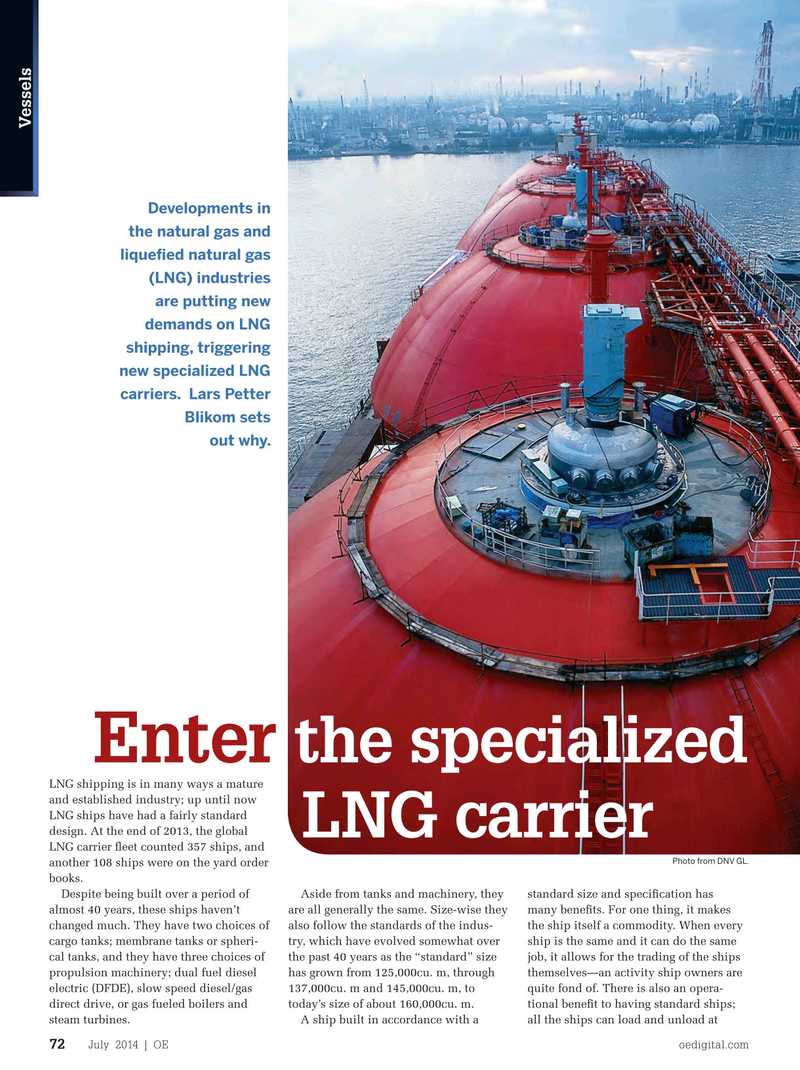
Page 70: of Offshore Engineer Magazine (Jul/Aug 2014)
Read this page in Pdf, Flash or Html5 edition of Jul/Aug 2014 Offshore Engineer Magazine
Vessels
Developments in the natural gas and liquefed natural gas (LNG) industries are putting new demands on LNG shipping, triggering new specialized LNG carriers. Lars Petter
Blikom sets out why.
Enter the specialized
LNG shipping is in many ways a mature and established industry; up until now
LNG ships have had a fairly standard design. At the end of 2013, the global
LNG carrier
LNG carrier feet counted 357 ships, and
Photo from DNV GL. another 108 ships were on the yard order books.
Despite being built over a period of Aside from tanks and machinery, they standard size and specifcation has almost 40 years, these ships haven’t are all generally the same. Size-wise they many benefts. For one thing, it makes changed much. They have two choices of also follow the standards of the indus- the ship itself a commodity. When every cargo tanks; membrane tanks or spheri- try, which have evolved somewhat over ship is the same and it can do the same cal tanks, and they have three choices of the past 40 years as the “standard” size job, it allows for the trading of the ships propulsion machinery; dual fuel diesel has grown from 125,000cu. m, through themselves—an activity ship owners are electric (DFDE), slow speed diesel/gas 137,000cu. m and 145,000cu. m, to quite fond of. There is also an opera- direct drive, or gas fueled boilers and today’s size of about 160,000cu. m. tional beneft to having standard ships; steam turbines. A ship built in accordance with a all the ships can load and unload at
July 2014 | OE oedigital.com 72 000_OE0714_Vessels.indd 72 6/20/14 5:23 PM

 69
69

 71
71